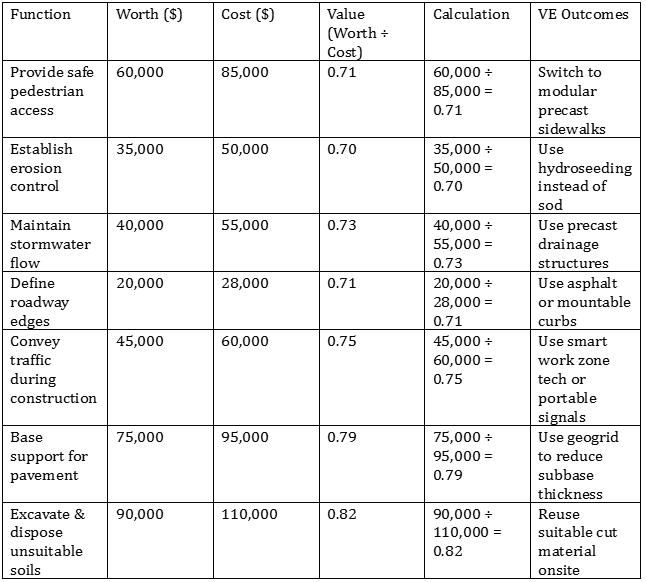Introduction and Opening Remarks
The New York State Department of Transportation (NYSDOT) has approved the design proposal for the reconstruction of NY Routes 242 and 353 within the Village and Town of Little Valley in Cattaraugus County, New York. This report will detail the construction management strategy, project scheduling, and site layout related to the execution of this roadway reconstruction project, all of which will be performed in compliance with applicable New York State laws, NYSDOT speci cations, and local regulations. The state has awarded this project to a quali ed contractor who will oversee all aspects of construction and project delivery.
We, the contracting team for the NY Routes 242 and 353 Highway Reconstruction Project, are honored to have been selected to carry out, manage, and deliver this infrastructure improvement e ort. The following preconstruction report outlines our planned approach for construction and management throughout the life of the project. This includes descriptions of the work to be completed, key responsibilities of the construction and design teams, compliance with safety and environmental standards, the construction schedule and activity sequencing, selected materials and equipment, conceptual cost estimation, value engineering evaluations, and lean construction principles that will be applied to improve e ciency. This document serves as the foundation for how the project will be executed in the eld.
Key Takeaways
*NYSDOT has approved the reconstruction project for NY Routes 242 and 353 in Little Valley, Cattaraugus County.
*A quali ed contractor has been selected to manage and execute the project per state and local regulations.
*The preconstruction report outlines the construction strategy, scheduling, and site layout.
*It details roles of the construction and design teams, safety and environmental compliance, and activity sequencing.
*Selected materials, equipment, cost estimates, and value engineering assessments are included.
*Lean construction methods will be applied to enhance project e ciency.
*The report serves as a guide for eld execution of the project.
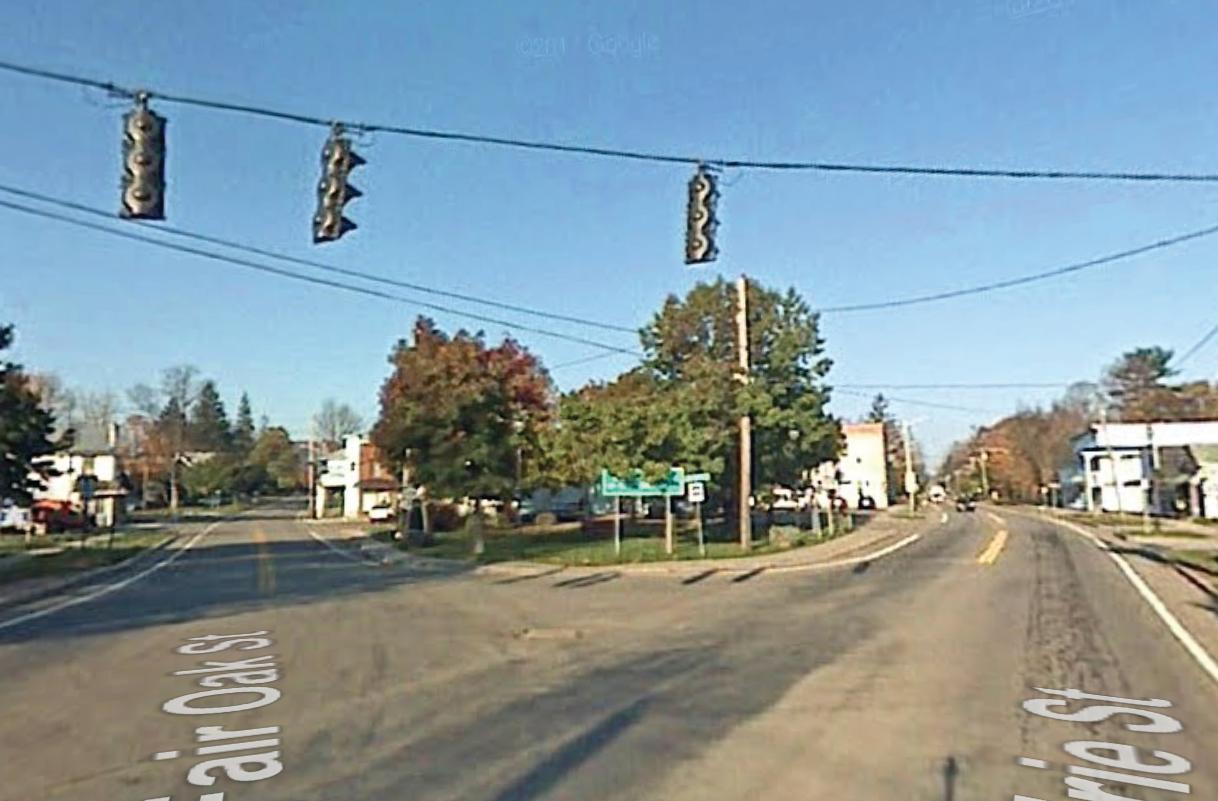
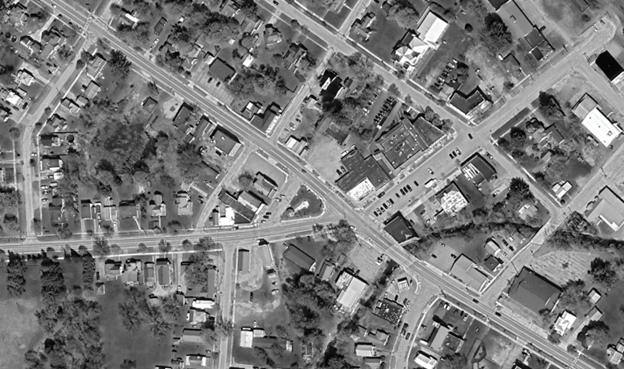
Legal and Regulatory Review
2.1 Jurisdiction and Codes
Governed under Highway Law Sections 10(25), 12, and 46
NYSDOT Standard Speci cations (E ective: January 1, 2025)
2.2 Stormwater and Erosion Control
Implements SWPPP compliance via:
Temporary seed and mulch (3,609 SY)
Check dams, gravel bag inlet protection
Biodegradable sediment lter logs (per Proposal Book 1)
2.3 Hazardous Waste Considerations
Environmental testing for:
Petroleum contamination, PCBs, TPH, diesel/gasoline range
TCLP testing for hazardous waste determination
Item 205.050201: 40 tons of contaminated (non-hazardous) soil disposal
2.4 Wage Regulations
Davis-Bacon Act: Federal prevailing wage enforcement
Cattaraugus County Rates:
Truck Drivers: $46.21/hr + fringe
Equipment Operators: $43.39–$47.89/hr
Executive Order 14026: $17.20/hr minimum wage oor where applicable
2.5 Maintenance of Tra c (MOT)
Alternating one-way tra c with certi ed aggers during active hours
Full two-lane tra c restored during non-working hours
Staged subbase and paving phasing per MOT plans (see B.P. drawings)
2.6 Utilities and Waterways
Major utility coordination required for gas, water, and electric systems
No protected waterways identi ed; general NYSDOT drainage rules apply
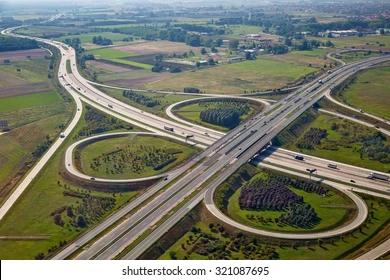


Heavy Equipment Selection
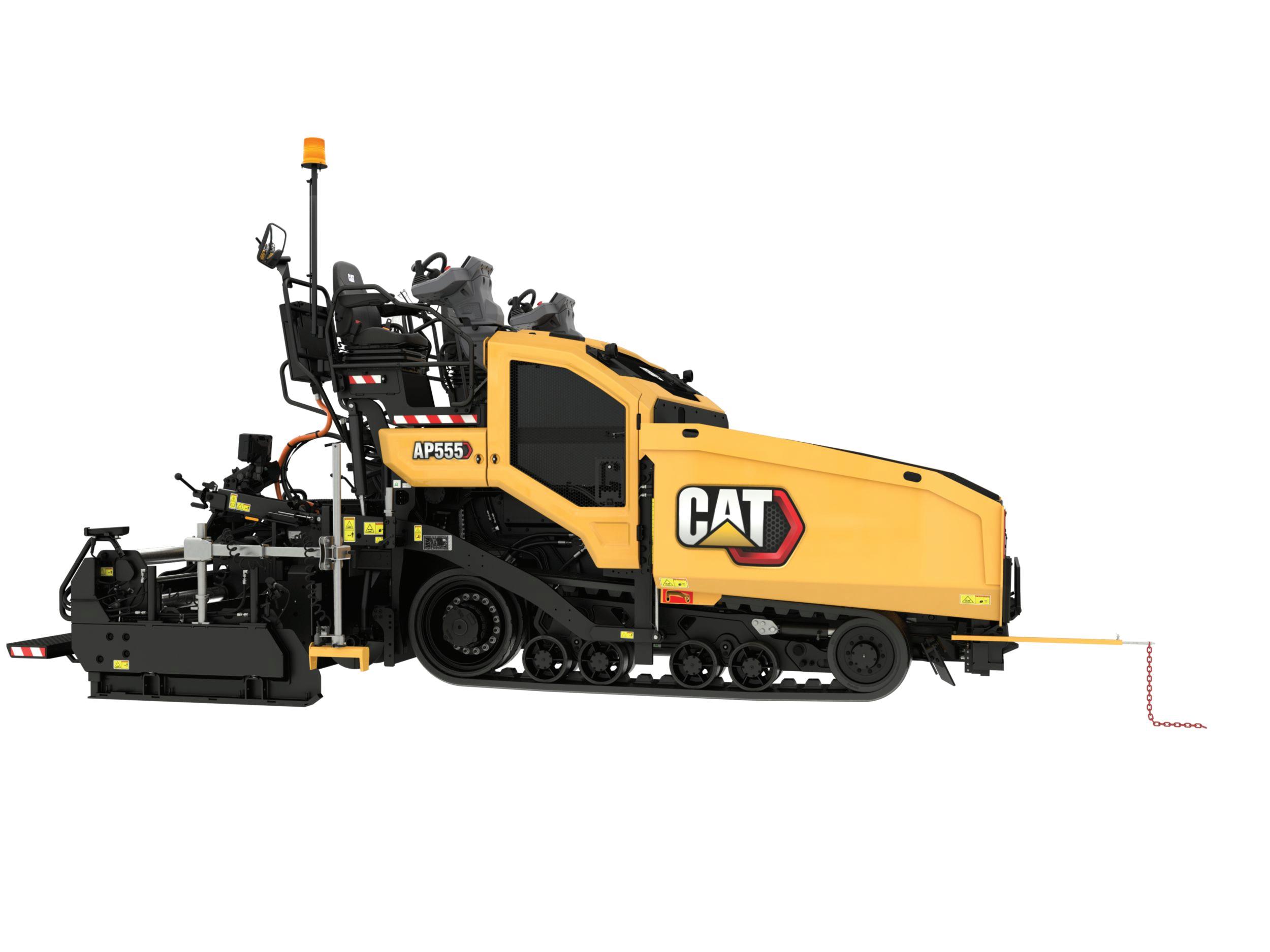
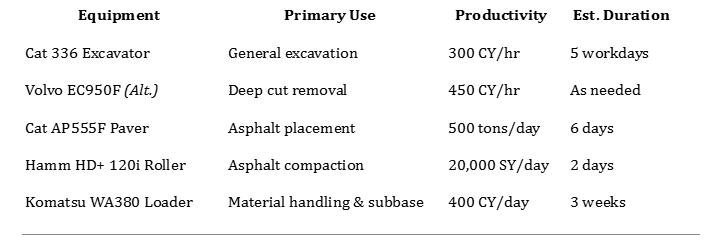

Project Sta ng and Organizational Structure
1.1 Prime Contractor & Subcontractors
Prime Contractor: [Insert Firm Name]
Key Subcontractors / Consultants:
Surveying Consultant
Electrical Systems Contractor
Pavement Marking and Signage Subcontractor
1.2 NYSDOT Key Personnel
Engineer-in-Charge:
Title: [TBD]
Agency: NYSDOT Region 5 – Cattaraugus County
Design Job Manager:
Name: Robert Schaller, P.E.
Role: Oversight of technical design compliance
Project Management Group:
Designation: NYSDOT Group 3
1.3 Contractor’s Project Team (Direct Supervision)
Field Superintendent – Oversees daily site operations and coordination
Scheduler – Maintains and updates project schedule
Estimator – Tracks cost projections and quantity variances
Safety Coordinator – Enforces project safety protocols and conducts audits
(Insert organizational chart here to visually depict reporting structure, note to group)
Key Responsibilities
Project Manager
- Oversee all phases of the project from mobilization to nal closeout
- Serve as the principal point of contact for NYSDOT, local agencies, and stakeholders
- Manage budgets, approve change orders, and implement risk mitigation strategies
- Lead coordination meetings and resolve design or construction con icts
- Ensure project compliance with NYSDOT speci cations, environmental regulations, and legal requirements
Field Superintendent
- Assign daily tasks to crews and subcontractors
- Coordinate eld operations to maintain schedule and quality standards
- Monitor site productivity and resource utilization
- Conduct daily site inspections and manage resolution of eld issues
- Enforce safety protocols and coordinate with the Safety Coordinator
Scheduler
- Develop and maintain a baseline CPM project schedule
- Update progress, logic changes, and durations regularly
- Analyze oat, identify delays, and recommend recovery actions
- Coordinate input from eld personnel, subcontractors, and suppliers
- Prepare and submit weekly/monthly progress reports for NYSDOT
Estimator
- Prepare conceptual and detailed cost estimates using historical data and bid tabs
- Perform accurate quantity takeo s and evaluate production rates
- Support the Project Manager in developing budgets and change order pricing
- Participate in procurement strategy and vendor selection
- Contribute to value engineering and cost optimization analyses
Saftey Coordinator
- Conduct safety orientations, brie ngs, and toolbox talks
- Perform site audits and hazard assessments
- Investigate incidents and ensure implementation of corrective actions
- Maintain safety documentation, training logs, and compliance reports
- Collaborate with Field Superintendent and foremen to mitigate jobsite hazards
Safety Management Plan
5.1 Work Zone Tra c Control
Compliance with NYSDOT Section 619 and MUTCD
Daily inspections by Tra c Control Supervisor
Use of temporary signals, signage, and aggers in Class 3 PPE
5.2 PPE Enforcement
Mandatory gear: steel-toe boots, ANSI Class 3 high-vis clothing, hard hats, safety glasses
Enforcement via:
Daily site checks by Superintendent
Written warnings and removal for repeated non-compliance
Daily PPE logs
5.3 Excavation Safety
Adherence to OSHA Subpart P:
Trench boxes or sloping for >5 ft depth
Competent Person on site for inspections
Excavation logs updated per shift
5.4 Utility Protection Zones
Coordination with National Fuel Gas and utility owners
Pre-marking zones and pre-dig meetings required
Vacuum excavation in high-risk areas
“No-machine-dig” bu ers strictly enforced
5.5 Paving Hazards
Crew brie ngs on fume, burn, and equipment hazards
Spotters used near rollers/pavers
Equipment operators must complete safety certi cations
5.6 Documentation & Safety Culture
Daily toolbox talks on task-speci c risks
Weekly audits by Safety Coordinator
Emergency Action Plan: includes nearest medical facilities, spill response, extinguisher stations
Gantt Chart - Key Categories
Important Roles and Timing Considerations
1. Mobilize & Initiate (Compliance Submissions & Scheduling)
2. Temporary Tra c Procedures
3. Clearing, Preparation, and Subbase
4. Subsurface Construction and Utility
5. Paving, Curb & Driveway Restoration
6. Electrical and Equipment Installation
7. Sidewalk Circulation and Landscaping
8. Wrap Up, Final Payments & Compliance Submissions
Time O /Holiday Considerations

AON - Key Categories
Important Roles and Timing Considerations



Additional Safety Considerations
All Things Considered
Struck-By Hazards - Risk from moving vehicles, equipment, or falling objects.
Use internal tra c control plans.
Require ANSI-compliant high-visibility apparel.
Assign spotters and de ne exclusion zones.
Caught-In/Between Hazards – Risk of being trapped by equipment, materials, or structures.
Maintain safe distances from equipment.
Use trench protection systems.
Ensure guards are in place and lockout/tagout is followed.
Fall Hazards – Risk of falling from heights or into holes.
Provide guardrails, nets, or fall arrest systems.
Cover oor holes and excavations.
Train workers in fall protection.
Electrical Hazards – Risk of shock or electrocution.
Lockout/tagout before maintenance.
Stay clear of power lines.
Use GFCIs and grounded tools.
Tra c Control Hazards – Risk from inadequate tra c control.
Follow MUTCD-compliant tra c control plans.
Use proper signage, barriers, and aggers.
Inspect tra c control setups regularly.
Heat Stress – Risk of heat-related illness in hot conditions.
Provide water, rest, and shade.
Schedule work during cooler hours.
Train workers to recognize symptoms.
Value Engineering (VE)
Each function is assigned an estimated Worth and actual Cost based on typical NYSDOT item values. Value is calculated using the formula: Value = Worth ÷ Cost. Outcomes represent potential savings or e ciency gains by adopting alternate methods or materials.
Basis for Worth Cost Estimates
The Worth and Cost values used in the Value Engineering matrix were estimated based on historical unit prices from NYSDOT pay item catalogs, recent bid results, and industry-standard cost data for civil infrastructure projects. Worth re ects the lowest reasonable cost to accomplish a function e ciently, while Cost re ects the expected price using standard NYSDOT methods and materials.
